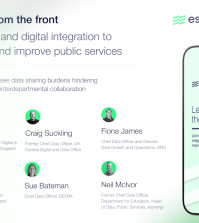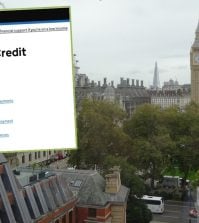The hat-trick: how to achieve savings, better services and public policy goals

Procurement reforms, ministerial agendas and budget savings don’t always line up in the public sector. KBR’s Tim Ellis explains how the Metropolitan Police have managed to make progress on all three fronts
Government procurement and contract management have changed dramatically in recent years, with civil servants frantically plugging capability gaps and pursuing ministerial agendas. Officials have moved away from dependence on a handful of big suppliers, and introduced more flexible contracts in which amendments don’t incur big fees. They’ve worked to sharpen up contract management, simplified the procurement process, and tried to buy more from small and medium-sized enterprises (SMEs). They’ve driven down prices, and improved transparency and the quality of management information.
But achieving so many goals simultaneously is hugely challenging – particularly when some stand in tension with one another. If you support SMEs with smaller contracts, you lose economies of scale and increase the demands on hard-pressed contract management staff. If instead you ask prime contractors to subcontract more work to SMEs, there’s a cost in terms of transparency. If you try to bear down on headline prices, suppliers may give less ground on amendment fees.
In the field of IT, the tower model – or ‘Service Integration And Management’ –offers a way forward: various specialist suppliers are brought in to cover their own fields of expertise, whilst another company integrates and manages their work. But in other areas of procurement, public organisations haven’t found a straightforward way of realising their many goals whilst overcoming the tensions between them. Until now.
In 2013, the Metropolitan Police signed a new facilities management contract with KBR, covering all the essential services such as cleaning, maintenance and security. The goal was to save 9% on total spending: a little under £5m per annum.
Three years on, the Met is saving £10m a year, whilst service satisfaction levels have improved and the number of SMEs providing services has leapt by 40%. If these savings can be maintained for the duration of the 10-year contract, the cash savings will reach £100m – a 20% fall in spending – and the Met has also made significant savings in management time and staff costs.
How does that work?
This kind of change can’t be generated by simply switching suppliers. The Met has developed a unique new service delivery model, which has been implemented and further advanced by KBR. And this model – the Service Integrator (SI) – could produce similar results in many other government organisations.
Under the SI, KBR sits alongside the client as an adviser and delivery partner: we build a new set of contracts directly with specialist suppliers, then oversee those contracts and provide a one-stop-shop troubleshooting operation covering all the managed services. So the client can enjoy all the advantages of contracting directly with specialist, expert local suppliers – greatly increasing procurement from SMEs – whilst accessing market-leading procurement and contract management expertise and delivering a single, integrated service to staff across the organisation.
With any new client, our first step is to conduct a review of all relevant contracts across the organisation; this often identifies ways to align suppliers’ work more closely with the organisation’s goals, to improve the service to individual business units, and to sharpen commercial models and performance metrics. We then identify and commission suppliers – as contractors to the client or members of the KBR supply team, depending on the client’s preference – and introduce a management information interface providing real-time data on suppliers’ performance.
In letting contracts, we seek specialist companies that are brilliant at what they do, know their patch and deliver on their promises – a model that tends to favour SMEs. But because we’re handling procurement and supplier management, clients can stop worrying about the complexity that comes with diversity and focus on bringing in the right supplier for each task or location.
With the new contracts in place, we introduce KBR’s National Integrated Service Centre, available across the client’s teams and covering all the managed services. Our customer service teams then ensure that suppliers provide a responsive and high-quality service, whilst referring any emerging problems back to the oversight team – which contains people from both the client and KBR.
What are the results?
Our customer service centre saves a huge amount of time among frontline staff and team leaders, who no longer need to coordinate the work of prime contractors and other suppliers. Meanwhile, the client’s senior leaders are freed up to focus on their own strategic goals – which lie in the fields of policy delivery and public benefits, not in managing property or other assets.
Sometimes, of course, the organisational change programmes necessary to realise those policy goals involve major reforms to office support services – and here too the SI system brings big advantages. Decision-makers benefit from much-improved management information, providing consistent, comparable cost and performance data running across the whole business. And because our contracts permit clients to alter their services without paying punitive penalty fees, the services provided can be flexed as – for example – organisations reduce their property portfolios.
The SI model also produces big savings across procurement, contract management and day-to-day operations. Aligning office support services to fit operational delivery makes life easier for public service professionals, and our supplier management functions minimise distractions, adjust services around changing operational requirements and ensure business continuity. The client meanwhile saves money in its own procurement and contract management operations, with our own staff taking on much of that work.
KBR is paid on a fee basis, rather than taking its cut from the contract values – so there’s no prime contractor’s mark-up, and any efficiencies made in the supply chain or savings produced as estates shrink flow directly back to the client. This also means that if other organisations join the contract, then all of our clients benefit from greater economies of scale and diluted management costs; and we’ve just managed to deliver these savings for the Metropolitan Police, as the London Fire Brigade are joining the Met’s FM contract.

Photo: Freeimages.com/nickwinchester
How could this help the civil service?
KBR is the sole provider on the Crown Commercial Service’s FM Assurance Framework, and our SI system has particular advantages for civil service organisations. In recent years, administrative budget cuts have prompted a number of departments to move their HQs; but accelerating reforms to business processes, ongoing austerity and tightening civil service-wide property management are catalysing further cuts in departments’ property holdings. This may leave departments facing charges to alter FM contracts or paying to maintain properties they no longer occupy – but under the SI model, organisations can flex their requirements without penalty as their needs change.
Meanwhile, departments are trying to sharpen up contract management in the delivery of outsourced public services. Passing supplier management to an expert partner helps them to retain that focus even as property reform programmes and expiring commercial deals threaten to raise the overall FM workload.
Looking ahead, there is obvious potential to apply KBR’s SI model to public service delivery. Rather than asking prime contractors to compete for regional delivery contracts, departments could use SI to contract directly with local SMEs, social enterprises and other providers – cutting out the middleman and providing far greater transparency, flexibility, accountability, and local responsiveness in service delivery.
This sort of work isn’t as profitable for KBR as the old model of prime contractors – but our clients are more satisfied, and we think that will ultimately show up on the bottom line. Since the credit crunch first loomed in 2008, the needs of public organisations have changed hugely; and the SI model has been designed for the world as it is today. These days, people want flexibility, agility and visibility over their spending and the services they receive. And they want to give specialist SMEs the chance to demonstrate how good they are at what they do, whilst maintaining a supportive framework that gives both the client and the suppliers confidence over delivery.
We’ve found a way to achieve all these objectives – and the Metropolitan Police and London Fire Brigade are already realising the benefits. Now we want to show civil service organisations what we can do; because if they take a close look, we’re confident they’ll see a system that delivers budget savings, higher-quality services, and public policy goals. And it’s not often that civil servants find a way to deliver on all three fronts at once.

















